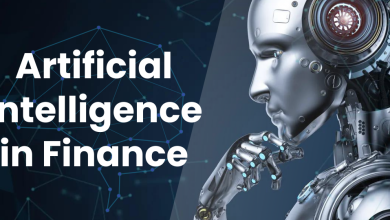
The ethical questions surrounding AI are not new. The difference now is scale. We’ve moved beyond isolated use cases or experimental pilots. AI is shaping how public services are accessed, how eligibility is assessed, how communications are delivered, and in some cases, how support is withheld. Companies and institutions frequently talk about “responsible AI” in their strategy documents. But what that looks like in day-to-day delivery, in the gritty process of enterprise-level implementation, is far less commonly explored.
This is not simply a question of governance or technical standards. It is, fundamentally, a question of design. Who is involved in shaping these systems? What assumptions are embedded in their logic? How do we ensure AI is transparent, accountable, and inclusive, not just in intent, but in outcome?
I’ve worked in digital design for public services for long enough to know that good intentions don’t guarantee good outcomes. Time and again, we’ve seen how new technologies, even those designed to increase access, tend to benefit those who are already relatively well-served. AI is no exception. Unless we are deliberate about how these systems are built, tested and governed, we risk deepening digital exclusion rather than addressing it.
The opportunity, however, is real. AI has the potential to support people with disabilities, to simplify complex interactions, and to make services more flexible and intuitive. But it won’t do those things by default. Inclusion has to be designed in. And ethics has to be implemented, not just discussed.
One of the most significant challenges is that enterprise-scale implementation rarely involves a single team or decision-maker. AI systems in large organisations are often the product of many hands, such as designers, suppliers and IT departments. Each may work with good intentions, but the result can be fragmented, with no single person accountable for whether the final product aligns with ethical standards or excludes key users.
This fragmentation is especially risky when the people designing or deploying the systems don’t reflect the diversity of those who will use them. In the UK, one in four people lives with a disability, whether related to vision, mobility, hearing, cognition or mental health. These are not niche users; they are everyday users of public services. If an AI product or service fails to work for them, it fails in a very fundamental sense.
There are promising examples of what it looks like when AI is used thoughtfully. Tools that describe images in detail for users with sight loss. Services that turn dense public-sector documentation into plain-language summaries for people with learning disabilities. Speech-to-text systems that allow real-time transcription for people who are deaf or hard of hearing. But their success lies not in the AI itself, but in the way they were built. This tends to be collaboratively, with the active involvement of those they were meant to support.
What we often get wrong in enterprise AI implementation is timing. Too many ethical considerations are left until the end when it’s the final test or a compliance review. But the damage is often done earlier. The right questions weren’t asked. The right people weren’t in the room. The assumptions that underpin the service weren’t examined.
One of the clearest examples of this is in the design of AI chatbots, which are now common across government and commercial services. The logic is appealing as they can help reduce pressure on staff, provide 24/7 support and improve access. But in practice, they can often break down for the very people who need support most. Users relying on screen readers can find chat interfaces unresponsive or confusing. Neurodiverse users may struggle with the structured logic of question trees or find language ambiguous. Even the simple act of getting through to a human advisor, something that should be easy, is often hidden or unavailable.
There is no such thing as an “average user.” Services that are truly inclusive are those designed from the start to accommodate variation, uncertainty, and difference.
So what does good implementation look like? For a start, it means involving people with lived experience throughout the design and development process. Not just at the testing phase, but in discovery, research, prototyping. The question isn’t just whether an AI product or service works, but whether it supports dignity, independence and trust. Will a user feel more confident using the system or more confused? Will it simplify their experience, or trap them in a loop of misunderstandings?
At an organisational level, there are frameworks that can help bridge the gap between ethics and practical delivery. Structured impact assessments, for instance, can prompt teams to ask whether their system introduces bias, how its decisions can be contested, and whether it excludes certain groups. Design standards for human-in-the-loop oversight ensure that automated systems don’t operate unchecked in high-stakes environments. Ethics “checkpoints” at key delivery stages allow for course correction before harm occurs.
But these tools only work if the organisation is willing to prioritise them. In fast-moving delivery environments, there is often pressure to move quickly. Ethical reviews are seen as blockers, or worse, as superficial boxes to tick. To change that, we need to build ethical reflection into the pace and rhythm of delivery itself. That means having teams trained in ethical risk awareness. It means creating space for critical discussion. And it means giving people permission to raise concerns without fear of being seen as slowing things down.
Of course, the issue of scale adds complexity. In large organisations, AI is often introduced in one team and then adopted more widely without a consistent approach to inclusion or ethics. Procurement becomes a key factor. If your ethical standards don’t apply to third-party tools, they don’t work.
That’s why public transparency is so important. Organisations that are serious about ethical AI should be willing to publish their standards, share their impact assessments, and open their systems to scrutiny. Trust is built through evidence.
There are, fortunately, examples of public services doing this well. Swindon Council, for instance, used AI to convert complex housing contracts into accessible, easy-read formats. What made the project successful was the process. The team worked directly with residents who would use the documents, gathering feedback, iterating based on real-world barriers, and ensuring the final output genuinely met people’s needs.
The workplace is another area where AI can either widen or close gaps. Tools that summarise meetings, transcribe conversations or personalise interfaces can support more inclusive ways of working, particularly when paired with flexible policies. But again, these systems only work if people trust them, understand how they function, and feel in control of the outcomes. Transparency isn’t just about knowing how a decision was made, but about feeling confident that it can be questioned, changed or stopped if necessary.
That question of control is central. If AI is being used to determine eligibility for benefits, for example, what options does a user have if it gets something wrong? Can they speak to a person? Can they understand the logic behind the decision? Can they challenge it?
Ultimately, AI’s most transformative potential isn’t in replacing humans, but in removing barriers. That might mean reducing the complexity of a service journey, eliminating the need for paperwork, or providing personalised support at scale. But it only happens if we design for it, and that means starting with the people who are most likely to be excluded.
Responsible AI at scale is possible. But it will not be achieved through policy alone. It requires a culture of listening, co-design, and critical reflection. And it requires an honest reckoning with the limitations of technology and the reality that inclusion is never automatic.





